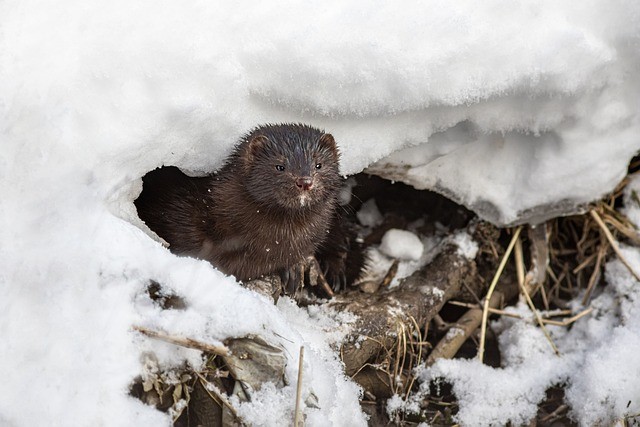Domesticated animals, including sheep, pigs, and cows, consistently exhibit smaller brain sizes compared to their wild ancestors- a phenomenon known as the domestication effect. However, a recent study conducted by the Max Planck Institute of Animal Behavior (MPI-AB) has unveiled a remarkable occurrence: the American mink has experienced a rare reversal of this domestication effect.

American Mink Regains Ancestral Brain Size Upon Escaping Captivity
Changes in the American Mink Brain Size
After generations of captive breeding resulted in a reduction in relative brain size, escaped mink populations were able to almost fully restore their ancestral brain size within just 50 generations.
Researchers investigating whether feral animals have the capacity to regain the relative brain sizes of their wild ancestors presented methodological complexities, Phys.org reported. However, the American mink provided a unique opportunity as it offered separate populations for study: wild minks from North America, domesticated minks from European fur farms, and feral minks across Europe.
To assess changes in brain size, the team employed skull measurements as reliable indicators. This approach allowed them to examine existing skull collections without the need for live animals. Cornell University museum collections were used to evaluate the skulls of wild American minks, while European fur farms contributed skulls of cultured minks.
Collaborating with Andrzej Zalewski at the Polish Mammal Research Centre, the researchers obtained a collection of skulls from an eradication program of feral minks to study the feral population. Overcoming the typical challenge of obtaining sufficient sample sizes for skull studies, the team was fortunate to work with multiple organizations to acquire the required population samples.
By measuring the skulls, the team calculated the relative brain sizes of the animals. Results showed that captive-bred minks exhibited a 25% reduction in brain size compared to their wild ancestors, aligning with the well-documented domestication process.
However, contrary to expectations, feral minks demonstrated a remarkable recovery, with their brain sizes growing almost back to wild levels within just 50 generations. This finding challenges the notion that brain size changes during domestication are irreversible, providing valuable insights into the potential plasticity of brain evolution.
READ ALSO: Do Domesticated Animals Have Smaller Brains?
Brain Plasticity in American Minks
The study, titled "Domestication Effect of Reduced Brain Size Is Reverted When Mink Become Feral" published in the Royal Society Open Science journal, also sheds new light on the plasticity of brain changes during domestication and the subsequent recovery upon returning to the wild.
Dina Dechmann, senior author of the paper, proposes a plausible explanation for the unexpected brain size recovery observed in American minks. She suggests that this particular species, belonging to a family of small mammals, possesses a unique ability known as Dehnel's phenomenon, which allows them to undergo seasonal changes in brain size. Dechmann has previously studied this phenomenon in shrews, moles, and weasels, thus recognizing its potential significance in minks.
While other domesticated animals tend to permanently lose brain size, minks may have the advantage of inherent brain size flexibility. According to Dechmann, this adaptability could be advantageous for minks reintroduced into the wild after escaping captivity.
In order to navigate the challenges of a natural environment, animals like the mink would require a fully functional brain, potentially enabling them to restore their brain sizes even if they had previously experienced shrinkage.
It should be noted that the study's findings do not ascertain whether the brains of feral minks function in the same manner as those of their wild counterparts. Examining the brains of these animals would be a necessary step in future research to gain further insights into their cognitive capabilities.
RELATED ARTICLE: Modern Dogs Have Bigger Brains Than Ancient Ones Thanks to Contemporary Breeding Efforts
Check out more news and information on Animals in Science Times.














